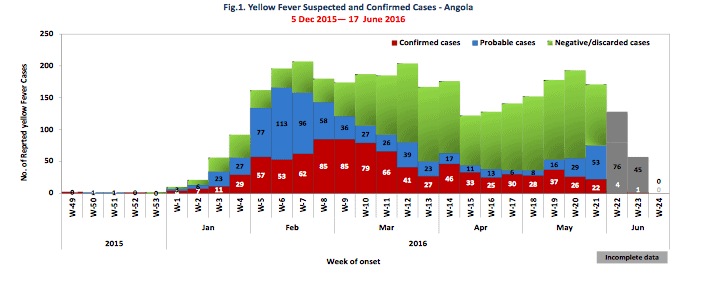June 25, 2016

A weekly roundup of news on drug resistance and other topics in global health.
Bacterial co-infection and the flu—just how common is it? In a post on the CDDEP blog, Research Analyst Wendi Jiang gives context to a newly published CDDEP research paper on rates of bacterial co-infection and influenza. In a systematic review of 27 studies, 11 to 35 percent of people hospitalized for influenza had a secondary bacterial infection—most commonly pneumonia caused by Streptococcus pneumoniae and Staphylococcus aureus. A possible bacterial co-infection is a common rationale for physicians prescribing antibiotics to flu patients, but “results from this study demonstrate that while patients hospitalized with the flu may indeed be co-infected with bacterial pathogens, many patients won’t be” and that includes many of the patients prescribed antibiotics. [CDDEP, Influenza and Other Respiratory Diseases]
How can we model the transmission of Streptococcus pneumoniae for public health and policy, capturing the reservoir and transmission dynamics that drive vaccine-induced serotype replacement and the evolution of resistance to antibiotics? A working paper by CDDEP researchers now available on the CDDEP website presents a Markov-chain model for S. pneumoniae and other pathogens that frequently colonize human hosts, but only occasionally cause disease. [CDDEP]
A yellow fever epidemic was declared in three provinces in the Democratic Republic of the Congo, with more than 1000 suspected cases reported. Only 67 cases have been confirmed: 58 imported from the widespread outbreak in Angola, and seven locally transmitted. Health officials are most concerned about possible spread of disease in the DRC’s capital, Kinshasa; the World Health Organization will launch emergency vaccination campaigns in Kinshasa and along the Angola-DRC border beginning in July. [Reuters, Voice of America]
The MCR-1 colistin resistance gene has been found in seagulls in LIthuania and Argentina. Researchers believe the gulls picked up E. coli containing mcr-1 by eating contaminated garbage, then flying hundreds or thousands of miles, spreading the organisms along their routes. The gene continues to be identified in new locations weekly, in more than 100 sites since the initial report in November 2015. [National Geographic, Journal of Antimicrobial Chemotherapy, Journal of Antimicrobial Chemotherapy, NCBI]
Advisors to the CDC recommend that nasal inhalation flu vaccine not be used for the next season. The federal Advisory Committee on Immunization Practices (ACIP) voted 13 to 1 against use of the inhaled vaccine, with one abstention, citing low vaccine effectiveness for the last three flu seasons. Vaccine producers had planned to produce 14 million doses of the inhaled vaccine version – about 8 percent of total vaccine production – and providers are now searching for replacement options. [CIDRAP]
Artemisinin-resistant malaria appears to be confined to Southeast Asia, quelling fears that it had already spread to Africa. An international collaborative group called KARMA (K13 Artemisinin Resistance Multicenter Assessment Consortium) mapped mutations to the K-13 propeller sequence of the parasite, which code for artemisinin resistance, from 59 malaria-endemic countries. The mutations found in Africa did not confer artemisinin resistance, but two distinct resistance patterns were found in Asia—one in Cambodia, Vietnam and Laos, and the other in western Thailand, Myanmar and China. [Institut Pasteur, New England Journal of Medicine]
Previous exposure to the dengue virus may amplify Zika infection, according to a study in Nature Immunology. Zika strains may use previous exposure to dengue as a way to “hijack” their way into a host, a process called antibody-dependent enhancement (ADE). “This may be why the current [Zika] outbreak has been so severe, and why it has been in areas where dengue is prevalent,” said senior author Gavin Screaton. Abortion requests have risen dramatically in countries affected early in the Zika epidemic, including more than doubling in Brazil and Ecuador. The U.S. Food and Drug Administration has approved the first Zika vaccine human trial, which is scheduled to begin with about 40 healthy volunteers later this year. [Imperial College London, Nature Immunology, BBC, STAT News]
More than 5,000 cases of swine flu—and more than 1000 deaths—have been recorded in 2016 so far in Brazil. As the weather in Brazil turns cooler with the onset of winter, unvaccinated individuals are left unprotected from a flu season that began earlier than usual. The outbreak has affected nearly every Brazilian state, and is now the worst in Brazil since 2009, when more than 2000 people died from the virus. [Medical Express]
Want to share interesting news via the digest? Email [email protected]
Image courtesy WHO Situation Report on Yellow Fever in Angola.











